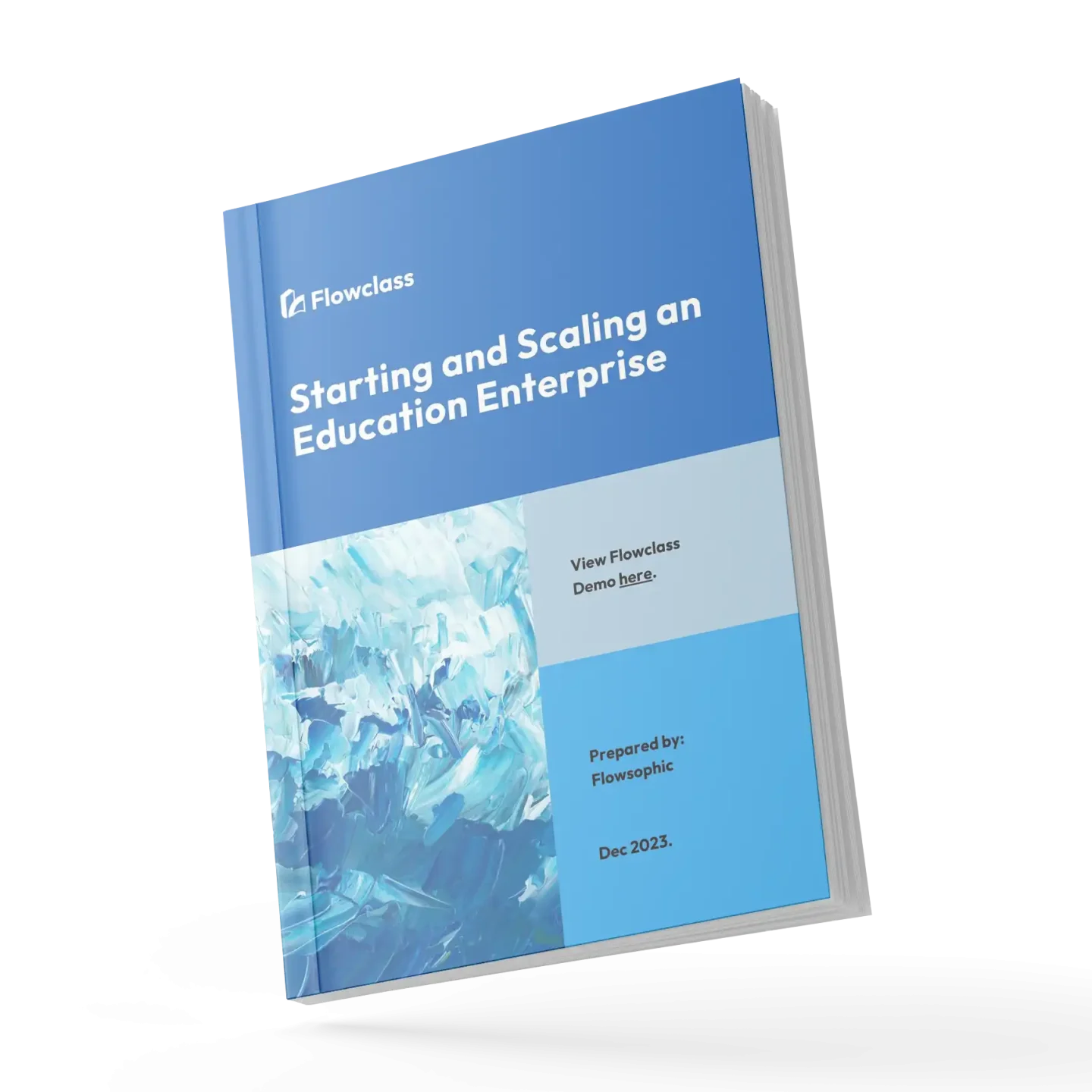Are you looking to enhance student learning and promote a collaborative classroom environment? Peer assessment could be the solution you’re looking for. In this article, we will explore how to effectively integrate peer assessment into your curriculum.
Peer assessment is a valuable educational tool that empowers students to become active participants in their own learning. By providing feedback to their peers, students develop critical thinking skills, improve their ability to communicate effectively, and gain a deeper understanding of the subject matter.
However, incorporating peer evaluation into your curriculum requires careful planning and implementation. It’s essential to establish clear guidelines and criteria for assessment, train students on how to give constructive feedback, and create a supportive classroom culture that encourages open dialogue.
In this article, we’ll share practical tips and strategies to help you successfully integrate peer assessment into your curriculum. From setting objectives and designing assessment rubrics to fostering a positive peer review process, you’ll discover effective techniques to ensure your students benefit from this powerful learning tool.
Get ready to revolutionize your classroom and empower your students with the transformative power of peer evaluation.
What is peer assessment?

Peer assessment is a collaborative learning approach where students evaluate and provide feedback on the work of their fellow classmates. It involves students actively engaging with the learning process by assessing their peers’ performance, understanding, and progress. This assessment is typically based on pre-defined criteria or rubrics, which help students develop critical thinking and evaluation skills.
In a peer assessment process, students take on the role of assessors, providing constructive feedback to their peers. This feedback can cover various aspects of the work, such as the content, structure, creativity, or adherence to guidelines. By actively participating in the assessment process, students gain a deeper understanding of the subject matter and develop essential skills like communication, collaboration, and critical analysis.
Peer assessment is a powerful tool that promotes active learning and fosters a sense of shared responsibility among students. It encourages students to take ownership of their learning, engage in meaningful discussions, and provide valuable insights to their peers. This process not only benefits the recipients of the feedback but also the students providing the assessment, as they deepen their own understanding and develop essential skills for their academic and professional development.
Benefits of peer evaluation in the curriculum
Integrating peer evaluation into the curriculum can bring a wealth of benefits to both students and teachers. One of the primary advantages is the enhancement of student learning and engagement. When students are actively involved in the assessment process, they become more invested in their own learning and that of their peers.
Peer assessment helps students develop critical thinking and problem-solving skills. By evaluating their peers’ work, students learn to identify strengths, weaknesses, and areas for improvement. This process encourages them to think critically, analyze information, and provide constructive feedback, which are essential skills for success in both academic and professional settings.
Furthermore, peer evaluation fosters a collaborative classroom environment. By engaging in peer feedback, students learn to communicate effectively, offer constructive criticism, and work together to improve their understanding of the subject matter. This collaborative approach promotes a sense of community and shared responsibility, which can lead to increased motivation and a deeper understanding of the course content.
Another significant benefit of peer assessment is the development of self-assessment skills. As students evaluate their peers’ work, they also gain a better understanding of their own strengths and weaknesses. This self-reflection helps students identify areas for improvement and develop strategies for personal growth, ultimately leading to enhanced learning outcomes.
Peer assessment methods and techniques
Peer assessment can be implemented using a variety of methods and techniques, each with its own unique advantages and considerations. One common approach is the use of rubrics or assessment criteria. Rubrics provide a structured framework for students to evaluate their peers’ work, ensuring consistency and objectivity in the assessment process.
Another effective technique is the use of peer review sessions, where students exchange their work and provide feedback to one another. These sessions can be conducted in-class or through online platforms, allowing for real-time discussions and the exchange of ideas. Peer review sessions encourage students to engage with each other’s work, ask questions, and offer constructive suggestions for improvement.
Peer assessment can also be integrated into group projects or collaborative assignments. In this approach, students not only work together to complete the task but also assess each other’s contributions and the overall group dynamics. This method helps students develop teamwork skills, foster accountability, and ensure equitable participation within the group.
Additionally, technology can play a significant role in facilitating peer evaluation. Online platforms and digital tools allow for anonymous peer feedback, which can encourage more honest and constructive critiques. These tools also provide opportunities for students to engage in peer assessment asynchronously, allowing for more flexibility and individual pacing.
Incorporating peer evaluation into the curriculum
Effectively incorporating peer assessment into the curriculum requires careful planning and a structured approach. The first step is to clearly define the learning objectives and the specific skills or competencies you want your students to develop through the peer evaluation process.
Once the learning objectives are established, you can design assessment criteria or rubrics that align with these objectives. These rubrics should outline the specific areas of evaluation, such as content, organization, creativity, or adherence to guidelines. Involving students in the development of these rubrics can further enhance their understanding and engagement in the assessment process.
Another crucial aspect of incorporating peer evaluation is providing comprehensive instructions and training for your students. This includes educating them on the purpose and benefits of peer assessment, as well as guiding them on how to provide constructive feedback. Offering examples of effective feedback and modeling the process can help students develop the necessary skills for successful peer assessment.
It’s also important to consider the timing and frequency of peer assessment activities within the curriculum. peer evaluation can be integrated at various stages of the learning process, such as during the planning, drafting, or final stages of an assignment. By incorporating peer assessment at different points, you can foster a continuous cycle of feedback and improvement, enhancing student learning and engagement.
Planning and designing peer evaluation activities

Effective planning and design of peer assessment activities are essential for ensuring a successful implementation within the curriculum. Begin by aligning the peer evaluation activities with the specific learning objectives and outcomes you want to achieve. This will help you create assessment criteria and rubrics that are tailored to your instructional goals.
When designing peer assessment activities, consider the level of complexity and the specific skills you want your students to develop. For example, you might start with more straightforward peer review tasks, such as providing feedback on the structure or clarity of a written assignment, and gradually progress to more sophisticated assessments that involve evaluating the overall quality, creativity, or problem-solving abilities demonstrated in the work.
Carefully structure the peer assessment process to provide clear guidelines and expectations for students. This can include defining the assessment criteria, outlining the steps involved in the peer review process, and specifying the format for providing feedback. Providing templates or examples of effective feedback can further support students in developing their peer evaluation skills.
Additionally, consider the timing and frequency of the peer assessment activities. Integrate them at strategic points throughout the learning process, such as during the planning, drafting, or final stages of an assignment. This will allow students to receive and incorporate feedback at various stages, fostering a continuous cycle of improvement.
Implementing peer assessment in the classroom
Successful implementation of peer assessment in the classroom requires a well-structured approach and a supportive classroom environment. Begin by clearly communicating the purpose and benefits of peer evaluation to your students, emphasizing its role in enhancing their learning and developing essential skills.
Provide comprehensive training and guidance to your students on the peer assessment process. This includes educating them on the assessment criteria, modeling effective feedback techniques, and offering opportunities for practice and feedback. Encourage students to focus on providing constructive, specific, and actionable feedback that is aligned with the assessment criteria.
During the peer assessment activities, actively monitor and facilitate the process. Offer support and guidance to students as they engage in peer review, ensuring that the feedback remains constructive and focused on improvement. Encourage students to ask clarifying questions and engage in meaningful discussions about the work being assessed.
To foster a positive and collaborative classroom culture, consider implementing strategies that promote trust, respect, and open communication. Encourage students to approach the peer evaluation process with a growth mindset, emphasizing that the goal is to support each other’s learning and development, not to critique or judge.
Provide opportunities for students to reflect on the peer assessment process and their own learning. Encourage them to consider how the feedback they received has impacted their understanding and how they can apply the insights gained to future assignments or projects.
Overcoming challenges in peer evaluation
While peer assessment offers numerous benefits, it is not without its challenges. One common challenge is ensuring the objectivity and fairness of the assessment process. Students may struggle to provide unbiased feedback, particularly when assessing their friends or peers they are familiar with.
To address this, it’s essential to establish clear assessment criteria and guidelines that help students focus on the work itself rather than personal biases. Additionally, you can consider implementing strategies like anonymous peer review or rotating peer evaluation partners to minimize the impact of personal relationships on the feedback.
Another challenge is the potential for students to feel uncomfortable or hesitant to provide honest feedback to their peers. This can be mitigated by fostering a supportive and non-judgmental classroom environment, where students feel safe to express their opinions and provide constructive criticism. Encouraging students to focus on specific, actionable feedback rather than personal criticisms can also help alleviate this concern.
Ensuring consistent and meaningful feedback from students can also be a challenge. Some students may struggle to provide detailed, well-thought-out feedback, or they may simply provide superficial comments. To address this, provide training and resources on effective feedback techniques, such as the use of specific examples, suggestions for improvement, and a focus on the learning objectives.
Additionally, managing the logistics of peer assessment, such as coordinating peer review sessions, collecting and distributing feedback, and providing timely feedback to students, can be time-consuming for the teacher. Utilizing technology-based tools and platforms can help streamline the process and make it more efficient.
Assessing the effectiveness of peer assessment
Evaluating the effectiveness of peer assessment is crucial for ensuring its successful integration into the curriculum and continuously improving the process. One approach is to collect feedback from students on their experiences with peer evaluation, including their perceptions of the process, the quality of the feedback received, and the impact on their learning.
You can gather this feedback through surveys, reflective assignments, or class discussions. By understanding the students’ perspectives, you can identify areas for improvement and make adjustments to the peer evaluation activities to better meet their needs and learning objectives.
Another way to assess the effectiveness of peer assessment is to analyze the quality of the feedback provided by students. Review the feedback given by peers and evaluate its relevance, specificity, and constructiveness. This can help you identify areas where students may need additional training or support to improve their peer assessment skills.
Additionally, you can assess the impact of peer evaluation on student learning outcomes. Compare the performance of students who have participated in peer assessment activities with those who have not, looking for any differences in their understanding, skill development, or overall academic achievement. This data can provide valuable insights into the effectiveness of peer evaluation in enhancing student learning.
Lastly, consider incorporating self-assessment as part of the peer assessment process. By having students reflect on their own performance and the feedback they received from their peers, you can gain a deeper understanding of the impact of peer assessment on their learning and self-awareness.
Resources and tools for peer evaluation
Implementing peer assessment in the classroom can be greatly enhanced by utilizing various resources and tools. One valuable resource is the availability of online platforms and digital tools specifically designed for peer assessment. These platforms often provide features such as anonymous feedback, collaborative review interfaces, and the ability to track and manage the assessment process.
Examples of such tools include Peergrade, Perusall, and Peerceptiv, which offer user-friendly interfaces and customizable assessment rubrics. These platforms can streamline the peer assessment process, making it more efficient and engaging for both students and teachers.
In addition to digital tools, there are numerous online resources and guides that can provide valuable insights and best practices for integrating peer assessment into the curriculum. Websites like the Center for Teaching and Learning at Stanford University, the Association for the Assessment of Learning in Higher Education, and the Eberly Center for Teaching Excellence at Carnegie Mellon University offer a wealth of information, case studies, and practical strategies for implementing peer assessment.
Peer assessment can also be supported through professional development opportunities, such as workshops, conferences, or online courses. These resources can help teachers deepen their understanding of peer assessment, learn new techniques, and explore effective strategies for implementation.
Furthermore, collaborating with colleagues and sharing best practices can be a valuable resource for teachers looking to incorporate peer assessment into their curriculum. Engaging in peer-to-peer discussions, sharing lesson plans, and exchanging feedback can foster a supportive community of educators committed to enhancing student learning through peer assessment.
Conclusion
Peer assessment is a powerful educational tool that can transform the learning experience for both students and teachers. By empowering students to take an active role in the assessment process, you can foster a collaborative classroom environment, enhance critical thinking skills, and promote a deeper understanding of the subject matter.
To effectively integrate peer assessment into your curriculum, it’s essential to carefully plan and design the activities, provide comprehensive training and guidance to your students, and create a supportive classroom culture that encourages open dialogue and constructive feedback. By addressing potential challenges and continuously evaluating the effectiveness of the peer assessment process, you can ensure that your students reap the full benefits of this transformative learning approach.
As you embark on your journey of incorporating peer assessment into your curriculum, remember that it’s a dynamic and evolving process. Be prepared to adapt and refine your strategies based on the feedback and insights you gather from your students. With dedication and a commitment to continuous improvement, you can unlock the transformative power of peer assessment and empower your students to become active and engaged learners.
📣Want to view more educational blogs like this? Check out our blogs!


